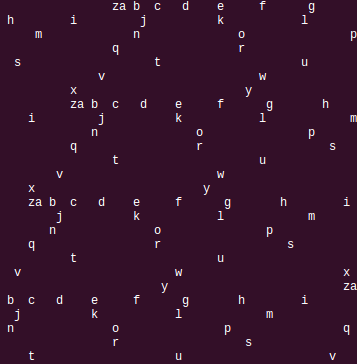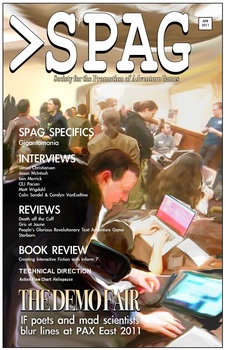A collaborative story by Jesse Ashcraft-Johnson, Eleanor Crummé, Alex Ghaben, Cisco Gonzales, Ray Gonzalez, Boling Jiang, Nick Montfort, Shannon Moran, Kirsten Paredes, Carter Rice, Tyler Wagner, and Jia Zhu
“Mr. President, can you summarize the events of the G-6 conference?”
“First, a bunch of world leaders surrendered their favorite prostitutes. Then, we all yelled ‘Yeehaw!'” That was what George H. W. Bush thought, anyway, as he delivered a quick straight answer to the question.
“Mr. President, what was your holiday message to the troops?”
“I told the boys: either step up to the challenge or there will be no Christmas presents this year.”
When the photo-op smiles fell away, there was a moment of hesitation between Bush, Canadian Prime Minister Mulroney and Mexican President Salinas. The prepared statements about NAFTA were left on the podium, the talking points and teleprompters left in the press room with the reporters. Music swelled outside closed doors. “Well — either we dance or we lose ourselves in emerging global markets!” Bush blurted out, the twang in his voice inviting them to the hoedown.
Whiskey heavy on his breath, Bush turned to Salinas and elbowed him playfully. “Were you tutoring someone last night in long division? Either that was a very short 18-year-old or you might want to go see a priest. I hear they’re good with that sort of thing.”
He felt Mulroney’s eyes on him and turned abruptly. “Do you have a staring problem, boy? You’re looking at me like a damn homosexual. Either you face me like a man or spend the night. I’ll pound you ’till you’re tender.”
Mulroney flashed a smile, then started. A SWAT team was scaling the White House wall. “Look!” he said, gripping President Bush’s hand. “Either monkeys are flying out of your butt, or we should really rethink what we told the police last night. Maybe that anonymous call to the FBI tip line about hiding little boys in the attic wasn’t such a great idea.”
As their hands touched, Bush remembered the secret NAFTA initiation ceremony of the previous night.
Salinas had been pouring shots of tequila for a while. Stumbling up on top of the table, Bush called for attention and announced: “In order to promote unity, we must remove all barriers to our freedom. That includes our clothing.” Salinas nodded gravely, adding, “we must be pure and unfettered in body as well as soul.” There were noises of confusion from the others gathered there. “Hey, I’m from Texas, bitches. This is how we roll. Go big or go home!” Mulroney reached deep into his pants and pulled out a 12-ounce bottle of maple syrup. “Big enough for you, Bush?” he shouted as he chugged it down with a giant sucking sound.
One thing led to another. In the darkness, having slipped past the Secret Service, they ended up joining hands while riding bicycles naked down Pennsylvania Avenue.
Bush was snapped out of his reverie by the arrival of the NAFTA treasurer who had come to brief the world leaders, who were inebriated once again, on the state of the budget.
“First, take off your clothes,” Bush told him. “Then we’ll talk … ”




